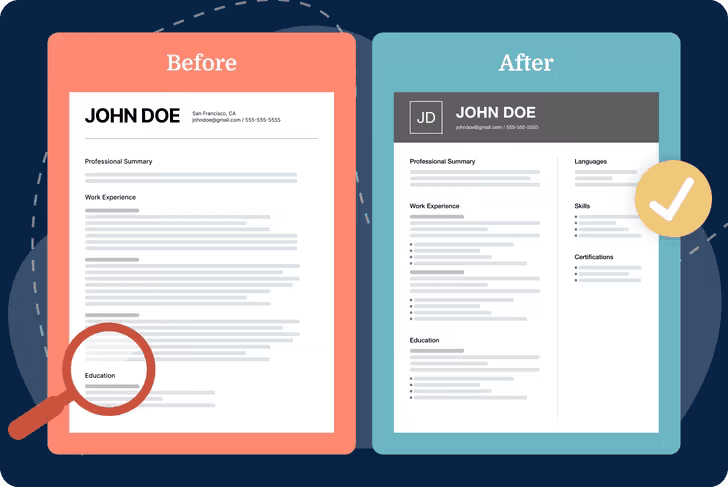How to Switch Careers Successfully
8/16/2025
James Oluwaleye
Learn how to switch careers successfully with proven tips, step-by-step guidance, and strategies for a smooth career change.

How to Switch Careers Successfully
- 1.Understand Your Reasons and Goals
- 2.Research the Job Market
- 3.Identify Your Transferable Skills
- 4.Build Your Credibility (Projects and Proof)
- 5.Update Your Resume and LinkedIn Profile
- 6.Network Purposefully
- 7.Apply Smartly
- 8.Interviewing as a Career Changer
- 9.Start Strong
- 10.Conclusion
Changing careers can be both exciting and scary. It gives you a chance to find work that feels more meaningful, pays better, or is more stable. However, it’s a complicated process. You’ll be leaving what you know for something new, and you’ll need a solid plan, patience, and determination to make the switch without burning bridges or wasting your time.
This guide will help you with a clear, step-by-step plan to successfully change your career. You can expect straightforward tasks, realistic timelines, useful templates, and ways to track your progress.
Understand Your Reasons and Goals
Before you do anything, take time to think about why you want to switch careers. It’s not just about getting a new job title; it’s about figuring out what you want your work life to look like.

Consider how you want to feel at work, what changes you hope to make in your life, and what you’re willing to give up. Write down your thoughts about why you want to make this change, and imagine what your life might be like one year after the switch. Make sure the future you envision excites you.
How to do it
Set aside some quiet time to answer these questions: What am I leaving behind? What am I aiming for? What am I not willing to sacrifice? After 48 hours, check back on your answers to see what still feels true. This helps separate emotional reactions from what you really want.
What success looks like
You’ll have a clear statement, a paragraph that serves as your guiding star. Use this statement to evaluate job opportunities or projects. If a job doesn’t help you get closer to that goal, it might not be the right fit for you.
Research the Job Market
Now that you know what you want, it’s time to see if there are jobs available. You need to find out if employers are looking for the type of role you want, what they expect from new hires, and if people like you have successfully made a similar change before.
How to do it
Look at job postings to find common skills and requirements. Check out profiles of people who have made similar career changes to see what experiences they highlight. Talk to at least three people who work in the field to get their insights.
What success looks like
Create a one-page overview that includes job demand, the most important skills, and a reasonable estimate of how long it might take to get hired. If the job market looks weak or the expectations seem too high, consider adjusting your goals or looking at related roles.
Identify Your Transferable Skills
Changing careers doesn’t mean starting from scratch. It’s about showing how your past experiences apply to your new job. This step is about honestly mapping out what you’ve done in a way that makes sense for future employers.
How to do it
List the important things you’ve accomplished in your previous jobs, not just tasks. Then, translate those accomplishments into terms that fit the new job. For example, instead of saying “ran team meetings,” say “led team communications that improved project delivery times.” Identify three skills that can help bridge your old experience to your new role.
What success looks like
You’ll have a clear map showing how your past experience relates to what employers want in your new field. If you can point to two or three examples that align with the new job’s responsibilities, you’re ready to start building your case.
Build Your Credibility (Projects and Proof)
Employers want to see that you can do the job. Just having a certificate isn’t enough; you need to show actual work. This step is about doing real projects that demonstrate your skills.

How to do it
Pick small projects that resemble the main tasks of the job you want. Focus on projects that yield measurable results, like a prototype or a campaign that increased engagement. If you can, do some volunteer or freelance work to gain real-world experience.
What success looks like
You’ll have one or two completed projects that you can discuss in job interviews. Each project should have a clear problem statement, your approach, and a measurable outcome. These projects will be key highlights on your resume and LinkedIn.
Update Your Resume and LinkedIn Profile
This step is about telling your story. You don’t need to create fake experiences; instead, you should reorganize and reframe what you’ve done to show its relevance to your new career.

How to do it
Start with a new title and a summary that explains your career shift. Turn your old job duties into statements that hiring managers will understand in the context of your new role. If necessary, add a section for relevant projects to highlight important work. On LinkedIn, write a short story in your About section that covers your motivation and transferable skills.
What success looks like
You’ll have a focused resume that gets you interviews for the jobs you want, and a LinkedIn profile that attracts interest from recruiters. If people often say “this is interesting” about your profile, you’re on the right track.
Network Purposefully
Networking is not about sending out a lot of resumes; it’s about building meaningful connections. The right conversations can help you find job opportunities, get referrals, and improve your story.
How to do it
Write a short, personalized message asking for advice, not a job. Use informational interviews to gather tips and test your ideas. Keep track of whom you’ve spoken to, what you learned, and any referrals you received. Offer something in return, like sharing an article or making a connection.
What success looks like
You’ll form a small number of valuable connections who can help you with referrals, job signals, or feedback on your work. If you’re frequently invited for coffee chats or quick calls, you’re doing well.
Apply Smartly
When applying for jobs, focus on quality over quantity. Each application should be a tailored case for why you’re the right fit for the role.
How to do it
Apply for jobs where at least half of the responsibilities match your skills. Use a brief cover note to explain your career change and highlight one relevant achievement. Always seek referrals, as they greatly increase your chances of landing an interview.
What success looks like
You’ll have interviews that connect with your prepared stories, and you’ll see a steady rate of interviews from your applications because they’re well-targeted. If you’re only getting interviews for jobs that don’t fit, reassess your approach.
Interviewing as a Career Changer
When interviewing for a new career, employers will ask two main questions: can you learn quickly, and have you done similar work before? Your goal is to answer both with solid evidence and a plan for your first 90 days on the job.

How to do it
Prepare stories that connect your past successes to the new job’s requirements. Practice explaining your career shift in a way that emphasizes your fit and what you can contribute. Be ready to discuss your projects in depth.
What success looks like
You’ll have confident and meaningful conversations during interviews, with interviewers asking about your projects and next steps. If they’re curious about how you’d start on day one, you’re showing you’re a credible candidate.
Start Strong
Getting hired is just the beginning; the real challenge is building a successful career. The first few months are crucial for making a good impression by achieving small wins and gaining trust.
How to do it
Come prepared with a simple plan outlining what you want to achieve in your first 30, 60, and 90 days.

Spend the first month learning and listening; take ownership of a small project in the second month; and aim for a measurable improvement by the third month.
What success looks like
You’ll have a record of early successes, good relationships with coworkers, and a clear path to more responsibilities. If your manager asks for a formal development plan, you’ve already set yourself up for growth.
Conclusion
Switching careers is less about escaping your past and more about turning it into something new. Each step in this guide is part of the process of making that change: defining your goals, researching the market, proving your ability, telling your story, and delivering results. Think of the career shift as a series of experiments; adapt quickly, keep your achievements visible, and let your work, not just hope, drive your success.


